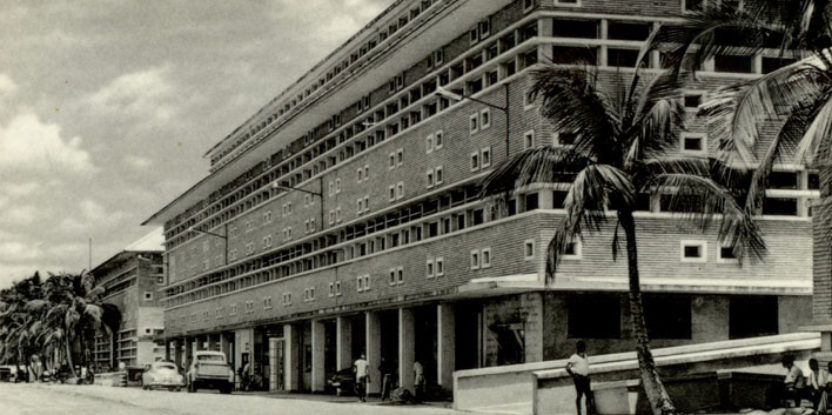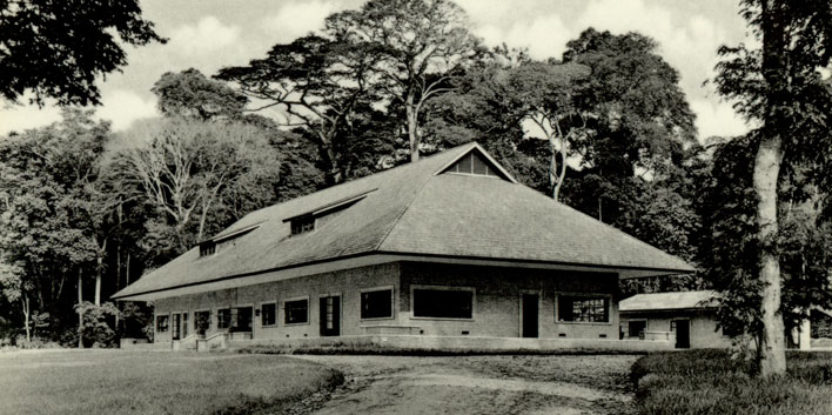Beginning in the late 19th century, effective classification of Africa’s bounteous vegetation became a major preoccupation for European geographers and botanists. Seeking to gain a better understanding of the vast territories that their countries had colonized, they hoped to contribute to more efficient land use, resource and environmental management.
But they soon realized they faced an enormous task. Africa is a megadiverse continent. From the East Sudanian savanna to the Central Zambezian miombo woodlands, Europeans found themselves describing and mapping a diversity of vegetation types on a scale unlike any other in the world.
Scientists embarked on ambitious efforts to produce useful literature and vegetation maps, but due to lack of international cooperation, divergent methods and concepts made it impossible to systematically classify the work done by different authors.
To deal with these challenges, in 1956 the Scientific Council for Africa South of the Sahara (CSA) convened a phytogeography conference held in the Belgian Congo’s Yangambi Research Station (in what is now Democratic Republic of Congo).
Located near the city of Stanleyville (now Kisangani), at the heart of the Congo Basin’s dense evergreen rainforest, Yangambi served as the headquarters of the National Institute for Agronomic Study of the Belgian Congo (INEAC). Founded in the 1930s, it soon became Africa’s most reputable tropical forestry and agriculture research center, hosting hundreds of scientists and technicians specialized in diverse disciplines such as botany, climatology, silviculture and ecology.
The Yangambi Conference, which spanned 10 days, was the first attempt to address language divergences between English- and French-speaking scientists and to promote collaboration between colonial powers. Notable participants included forester André Aubréville and explorer Théodore Monod from France, and botanists Ronald William John Keay and Paul Westmacott Richards from Britain, as well as a dozen government representatives from Belgium, France, Britain, Portugal, the Federation of Rhodesia and Nyasaland (now Zambia, Zimbabwe and Malawi), and the Union of South Africa (now Republic of South Africa).
The conference concluded with an international agreement that recommended a unified nomenclature and definition for tropical and subtropical Africa’s types of vegetation. This classification served as the foundation for the first bilingual ‘Vegetation Map of Africa South of the Tropic of Cancer’, published by UNESCO, the U.N. cultural agency, in 1958.
“Unlike other initiatives, the Yangambi classification did not focus on listing species, but instead gave detailed descriptions of the vegetation of each type of forest,” said Hans Beeckman, head of the wood biology service of Belgium’s Royal Museum for Central Africa (RMCA). “This information remains very useful to quantify forests’ biomass and map carbon stocks.”
Following a series of revisions to address the agreement’s shortcomings, in 1983 British forester Frank White published a new version of this map. Ever since then, numerous publications have suggested changes and additions, but the Yangambi classification remains the basis of all modern systems.
“The Yangambi agreement had a great influence on the following generations of foresters studying the African continent,” said Robert Nasi, director general of the Center for International Forestry Research. “The switch of focus from botany (looking at species) to phytogeography (vegetation types) was really a tipping point for forestry and vegetation ecology.”
In recognition of Yangambi’s scientific contributions to reconcile biodiversity conservation with sustainable use, in 1978 UNESCO declared 235,000 hectares of forest in Yangambi a Man and Biosphere Reserve.
A modern forestry hub
Following decades of budget cuts and neglect, Yangambi is once again positioning itself as an important center for the study of Africa’s forests. Since 2007, CIFOR has received funding from the European Union to lead several projects aimed at consolidating Yangambi’s role as an “open air laboratory” at the heart of the Congo Basin.
An outstanding example of international academic collaboration between Congolese and foreign institutions, these interventions focus on applied research to protect DRC’s rich biodiversity and improve the livelihoods of rural communities.
Researchers from the RMCA and the University of Kisangani (UNIKIS), for example, are studying how to support the natural regeneration of Afrormosia (Pericopsis elata), an endangered tree species with a high value in the timber market. This research has been facilitated by the recent construction of a wood biology laboratory in Yangambi.
Moreover, experts with the Meise Botanic Garden and the Congolese Institute of Agronomic Research (INERA) are studying Yangambi’s wild coffee species in a quest to support Robusta coffee growth in a climate change context, and potentially contribute to develop the country’s coffee industry. They are also digitizing and modernizing the dried plant collection found in Yangambi’s herbarium – a rare botanical treasure of 150,000 specimens.
CIFOR, INERA, and UNIKIS experts are also studying local forest product value chains, including charcoal, timber and wild meat. Their goal is to promote sustainable production, transport and trade to support local populations to improve their livelihoods, while mitigating negative environmental impacts.
Finally, this year Belgium’s Ghent University (UGent) and INERA are inaugurating an Eddy Covariance tower in Yangambi – a first in the Congo Basin – which will measure greenhouse gas exchanges between the forest and the atmosphere. The data produced will be crucial to better understand forests’ contribution to mitigate climate change.
“Yangambi is the cradle of forestry research in the Congo Basin,” said Chadrack Kafuti, a Ph.D. student at UGent. “Because it is home to so many archives, samples and experimental plots – some of them dating from 70 years ago – it is the perfect place for foresters to study the evolution of trees and forest dynamics.”
We want you to share Forests News content, which is licensed under Creative Commons Attribution-NonCommercial-ShareAlike 4.0 International (CC BY-NC-SA 4.0). This means you are free to redistribute our material for non-commercial purposes. All we ask is that you give Forests News appropriate credit and link to the original Forests News content, indicate if changes were made, and distribute your contributions under the same Creative Commons license. You must notify Forests News if you repost, reprint or reuse our materials by contacting forestsnews@cifor-icraf.org.



